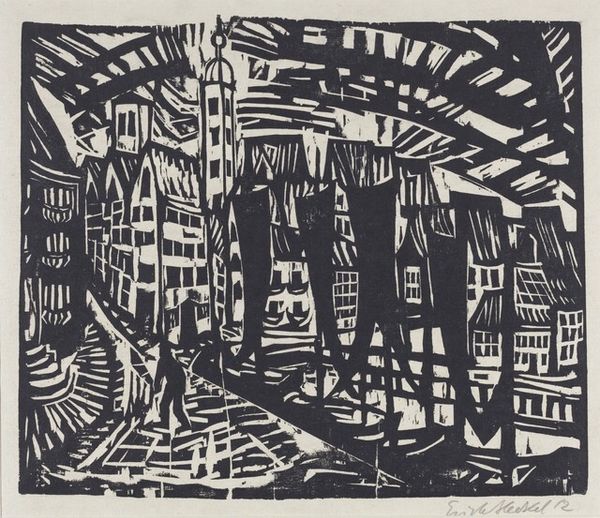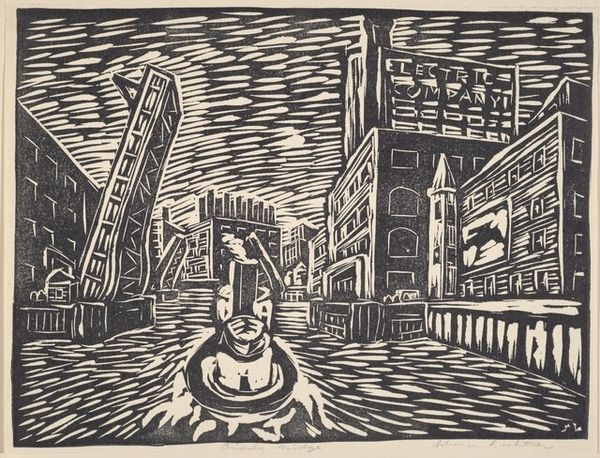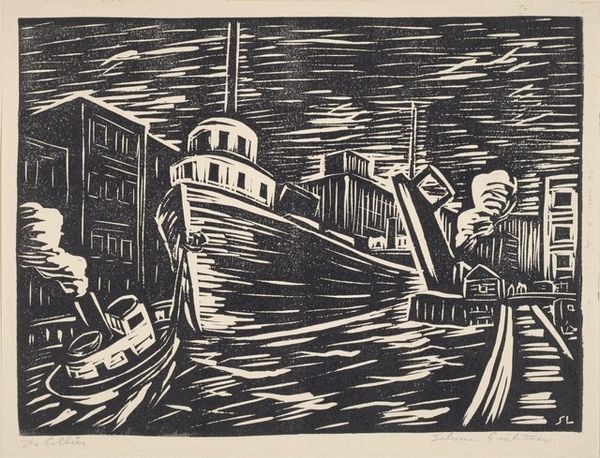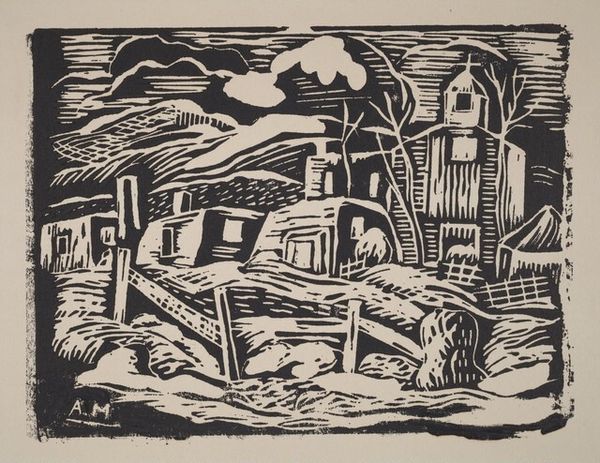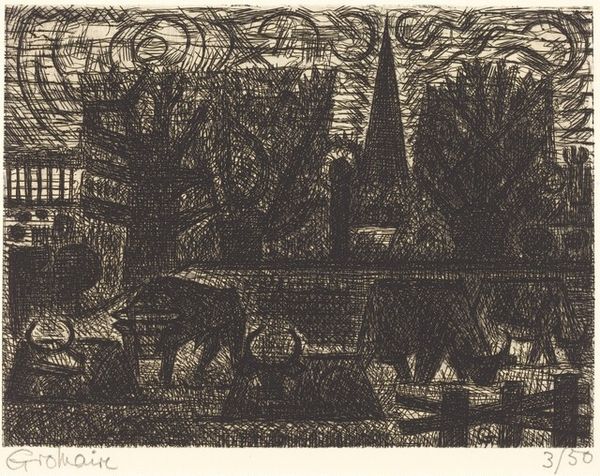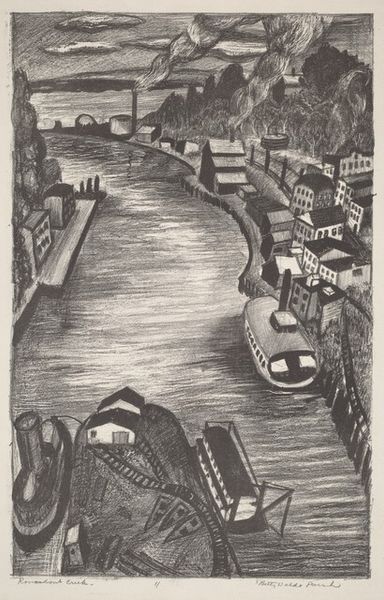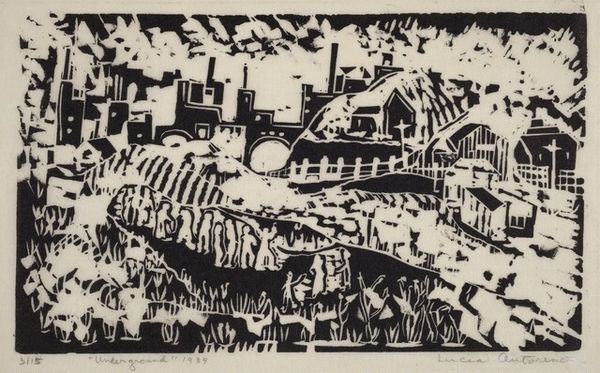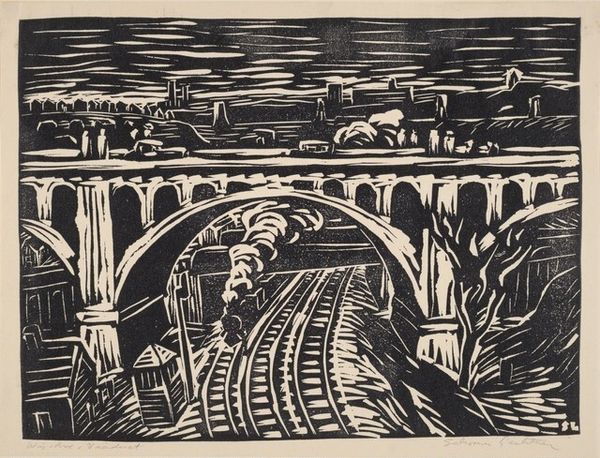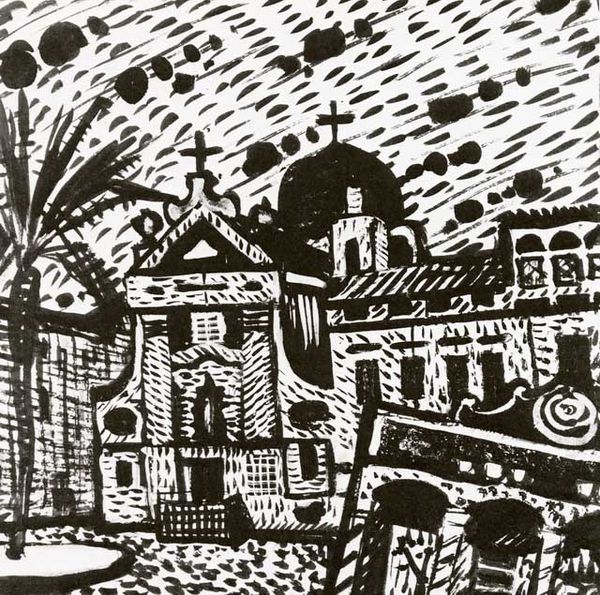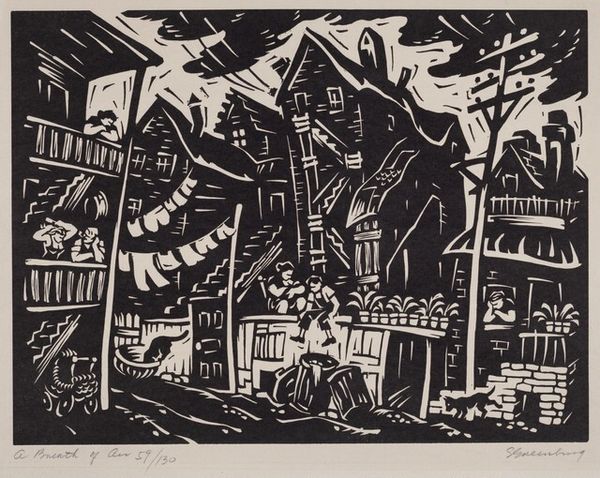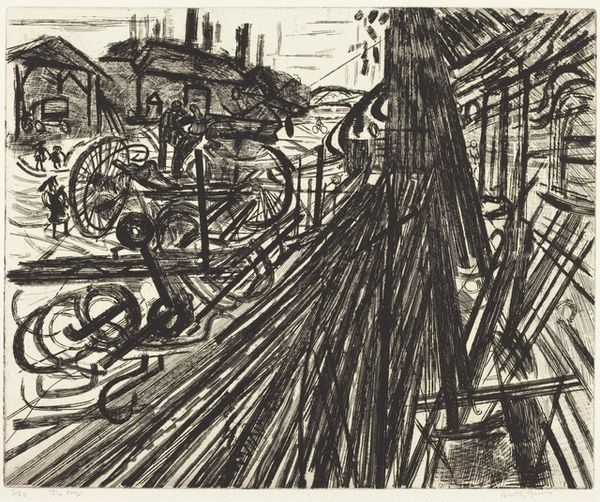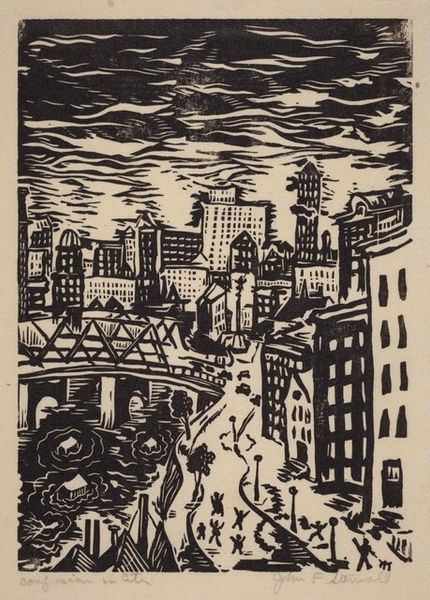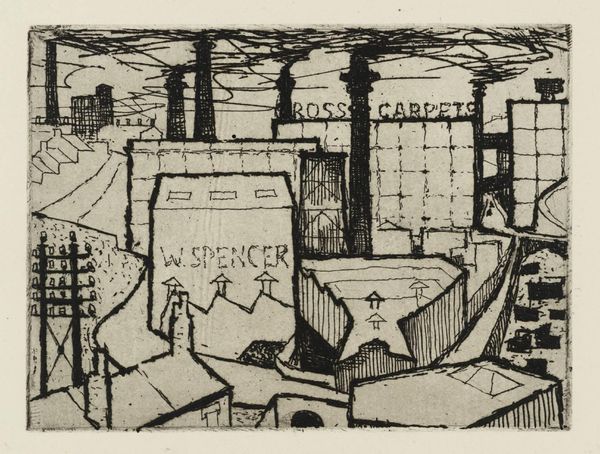
Copyright: National Gallery of Art: CC0 1.0
Curator: This is "The Brewery," a woodcut print created in 1932 by Schomer Lichtner. Editor: It's strikingly stark. The heavy blacks create a somber, almost oppressive atmosphere. A real sense of foreboding here, don't you think? Curator: The print medium is critical here. Consider the process: Lichtner would have painstakingly carved away the negative space from a block of wood. Every line, every shadow demanded labor. That deliberate act transforms the urban scene. Editor: The brewery itself looms large. The silhouetted buildings become symbols of industry. Notice the tracks and trains. They suggest journeys, both literal and metaphorical. Perhaps this relates to a loss of identity, a disconnection, given the figure seems quite alone. Curator: The visible grain of the wood itself adds to this feeling, making us conscious of the artistic work and craft. But that grain also lends a rough texture. These weren't comfortable, pristine times for working-class laborers. It evokes the labor invested not only by the artist but also, in some way, that of the workers themselves. Editor: True, the dark and looming architecture—it feels monumental. But those three smokestacks atop one building almost look like church spires in their shape. Industrial "holy sites", perhaps? Curator: Maybe that observation points to how consumer culture and the means of production almost replaced religion and other symbolic belief systems. Notice the building that states, 'Milgon MFG CO' that appears front and center along with other signage, it brings consumerism right into the artwork, impossible to ignore. Editor: And yet that lone figure walks away from it all. We’re left with questions about industry, labor, and our place in the social landscape. It almost reads as an existential cry for answers in these urban environs. Curator: Looking closely at "The Brewery" reminds us of art’s capacity to record the human and economic condition. It is not just an image; it is evidence of artistic vision meeting societal concerns. Editor: Yes, I find it still has much to say about where we find ourselves and how images continue to carry meaning. Thank you.
Comments
No comments
Be the first to comment and join the conversation on the ultimate creative platform.
